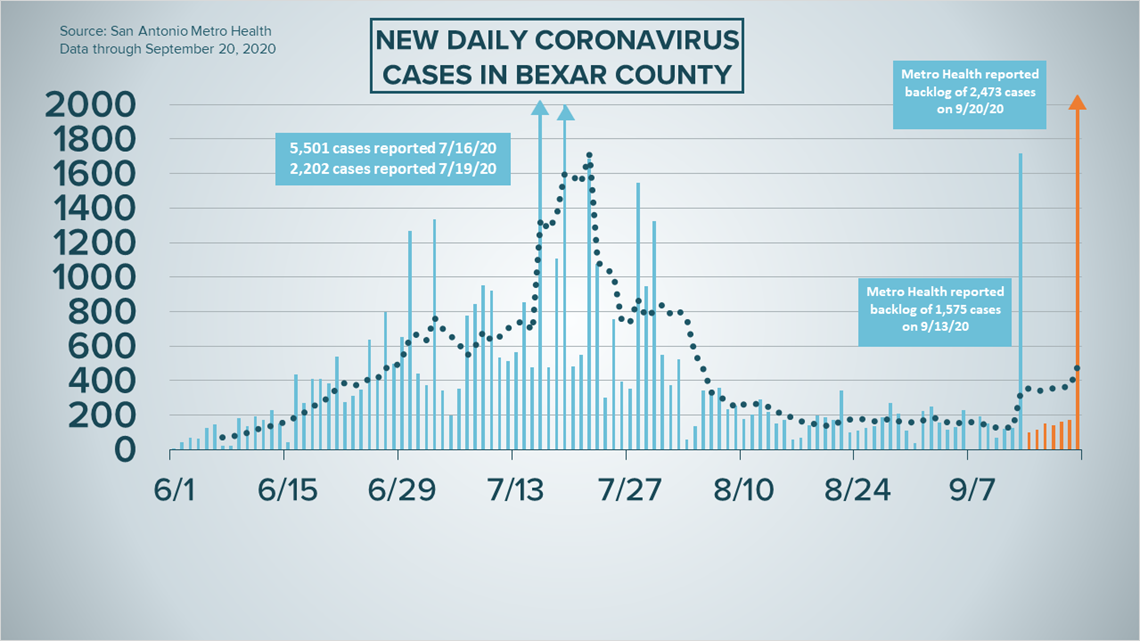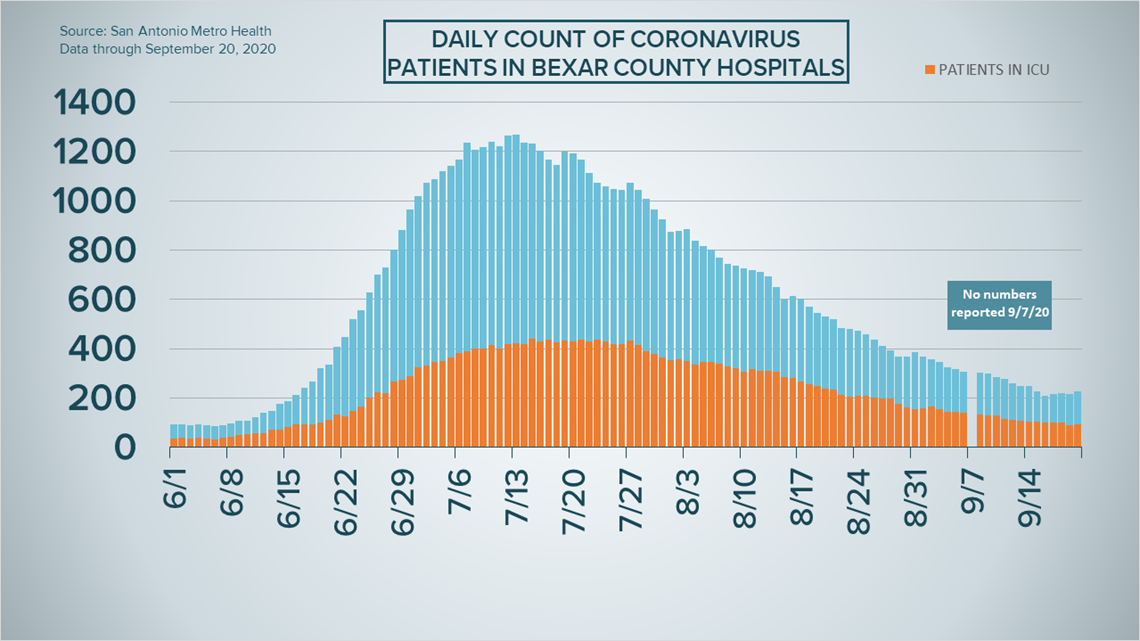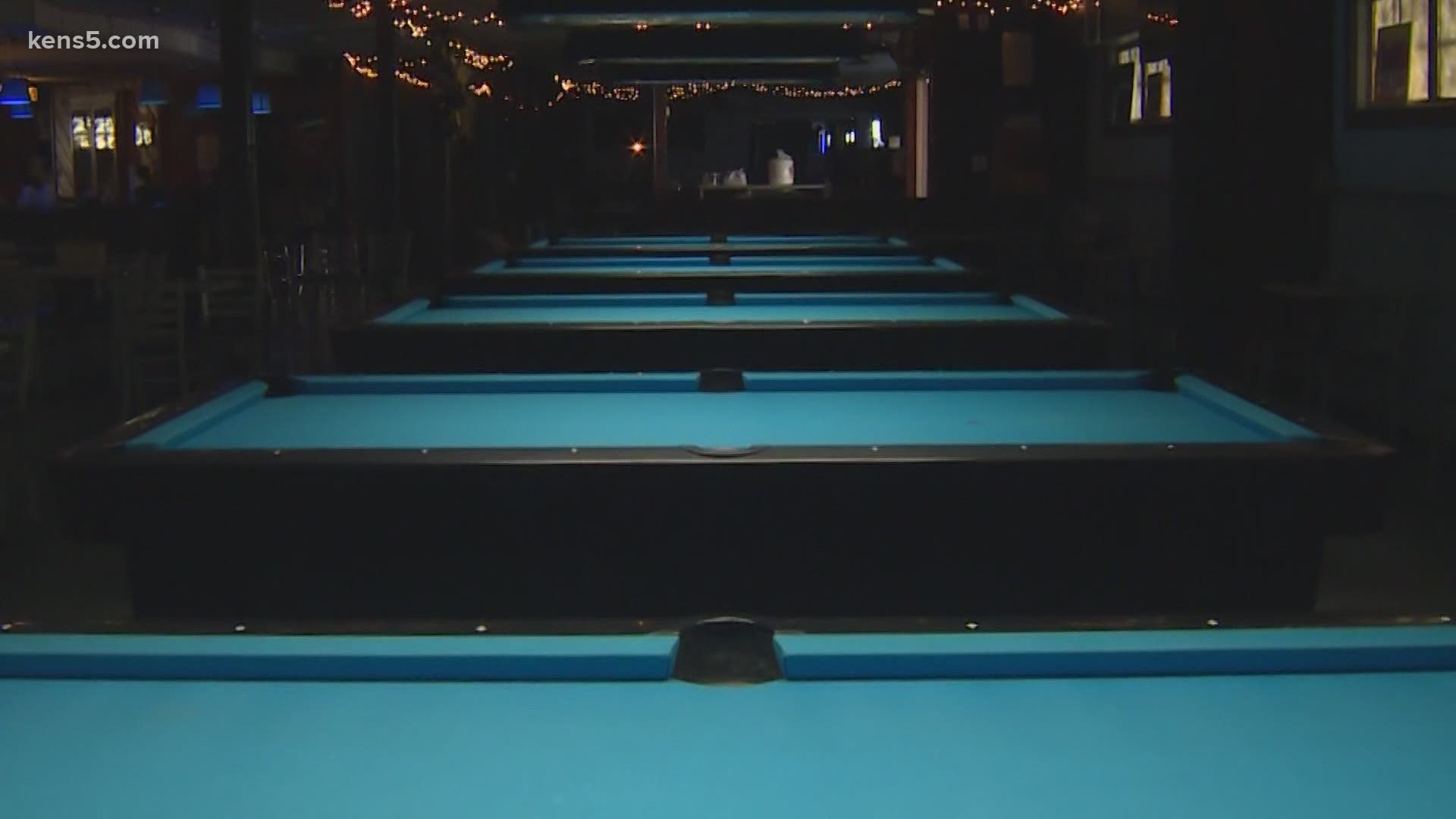SAN ANTONIO — We're tracking the latest numbers from the coronavirus pandemic in San Antonio and across Texas. Here are the latest numbers reported by Bexar and surrounding counties:
- Bexar County: 108 new cases were reported Sunday, bringing the total number for the county to 53,341). The county death toll, rose to 1,061 after one new fatality was reported. Backlogs of 2,473 cases and 35 deaths were reflected as well.
- Comal County: The county reported 10 additional cases on Friday. One additional death was reported. There have been a total of 3,280 cases of COVID-19 in the county – including 2,600 confirmed cases – while 116 county residents have died. County officials say there are 321 active coronavirus cases, and 2,843 residents are considered recovered.
- Hays County: Officials in Hays County on Friday reported 17 new cases in the county and no additional virus-related deaths. As of Friday, there are a total of 5,736 lab-confirmed cases in the county (1,744 of which are active) while the death toll stands at 165. 3,940 residents have recovered from the virus.
How Bexar County is trending
We've tracked how many coronavirus cases have been confirmed in Bexar County from the time officials began reporting cases in March 2020. The graphic below shows the number of cases since June and charts those daily case numbers along a 7-day moving average to provide a more accurate picture of the overall coronavirus case curve in our area and the direction we're trending amid the pandemic.
On Sunday, San Antonio Metro Health updated their online dashboards to report 2,581 additional coronavirus cases in Bexar County, raising the total to 53,341 since the pandemic began.
Only 108 of those cases are considered new, while 2,473 were attributed to a backlog of lab reports.


The death toll rose by 36 on Sunday as Metro Health reported one new fatality and 35 between July 8 and September 2. In all, 1,061 Bexar County residents have passed away from COVID-19 complications. They are investigating an additional 183 deaths reported by DSHS.
Hospitalizations rose by 11 on Sunday, up to (225). The number of local coronavirus patients on ventilators (45) and the number of patients in intensive care (92) both increased slightly as well.


Coronavirus in Texas
The number of Texans who have tested positive for the coronavirus since the pandemic began grew by 2,466 Sunday, according to the Texas Department of State Health Services. Of that increase, 2,241 are attributed to newly-reported coronavirus cases. Another 225 cases in the total stem from backlogs in different counties.


In total, 688,534 Texans have tested positive for COVID-19.
Meanwhile, the state also reported another 45 virus-related fatalities. In all, 14,893 Texans have died from coronavirus complications. The number of hospitalizations on Sunday dipped slightly, to 3,081; that's 43 fewer Texans receiving treatment for COVID-19 symptoms compared to Saturday.
State officials estimate 609,210 Texans have recovered while 64,431 remain ill with the virus.
As of Thursday afternoon, the state's public school COVID-19 data dashboard shows 2,344 positive cases out of 1.1 million students learning in-person. DSHS says that’s less than .5 percent of the total student population who are learning in-person. The total count of on-campus staff cases during the same period is 2,175.
The data on the DSHS' website will be updated weekly on Wednesdays. Beginning Sept. 23, it will include data by school district.
Latest Coronavirus Headlines
- Biden: Supreme Court vacancy refocuses referendum on Trump's health response
- Bananas Billiards holds fundraiser in fight to survive coronavirus
- Nurses end strike at University of Illinois Hospital
- Democrats set to unveil stopgap bill to prevent government shutdown
- Here's why VA hospitals in Texas are treating COVID-19 civilians
- Trump declares 100M virus vaccine doses before end of the year
- Pine-Sol approved to kill coronavirus by EPA
- CDC reverses controversial COVID-19 testing guidance that caused backlash
- August unemployment rate in Texas drops to 6.8% from 8% in July
Coronavirus symptoms
The symptoms of coronavirus can be similar to the flu or a bad cold. Symptoms include fever or chills, cough, shortness of breath or difficulty breathing, fatigue, muscle or body aches, headache, new loss of taste or smell sore throat, congestion or runny nose, nausea or vomiting and diarrhea, according to the Centers for Disease Control.
Most healthy people will have mild symptoms. A study of more than 72,000 patients by the Centers for Disease Control in China showed 80 percent of the cases there were mild.
But infections can cause pneumonia, severe acute respiratory syndrome, kidney failure, and even death, according to the World Health Organization. Older people with underlying health conditions are most at risk.
But infections can cause pneumonia, severe acute respiratory syndrome, kidney failure, and even death, according to the World Health Organization. Older people with underlying health conditions are most at risk.
Experts determined there was consistent evidence these conditions increase a person's risk, regardless of age:
- Chronic kidney disease
- COPD (chronic obstructive pulmonary disease)
- Obesity (BMI of 30 or higher)
- Immunocompromised state (weakened immune system) from solid organ transplant
- Serious heart conditions, such as heart failure, coronary artery disease, or cardiomyopathies
- Sickle cell disease
- Type 2 diabetes
The CDC believes symptoms may appear anywhere from two to 14 days after being exposed.
Human coronaviruses are usually spread...
- Between people who are in close contact with one another (within about 6 feet).
- Through respiratory droplets produced when an infected person coughs, sneezes or talks. These droplets can land in the mouths or noses of people who are nearby or possibly be inhaled into the lungs.
- Some recent studies have suggested that COVID-19 may be spread by people who are not showing symptoms.
Help stop the spread of coronavirus
- Stay home when you are sick.
- Eat and sleep separately from your family members
- Use different utensils and dishes
- Cover your cough or sneeze with your arm, not your hand.
- If you use a tissue, throw it in the trash.

